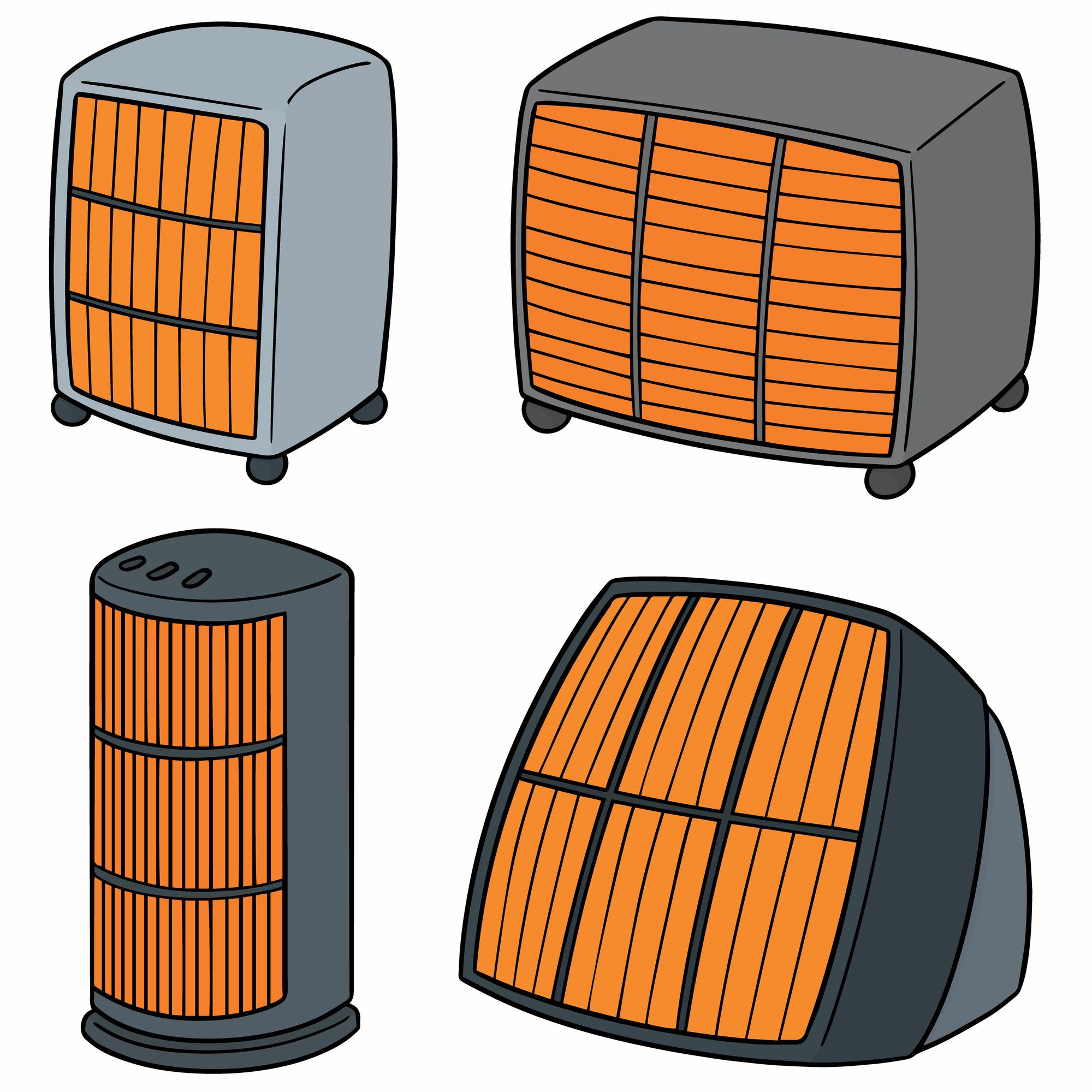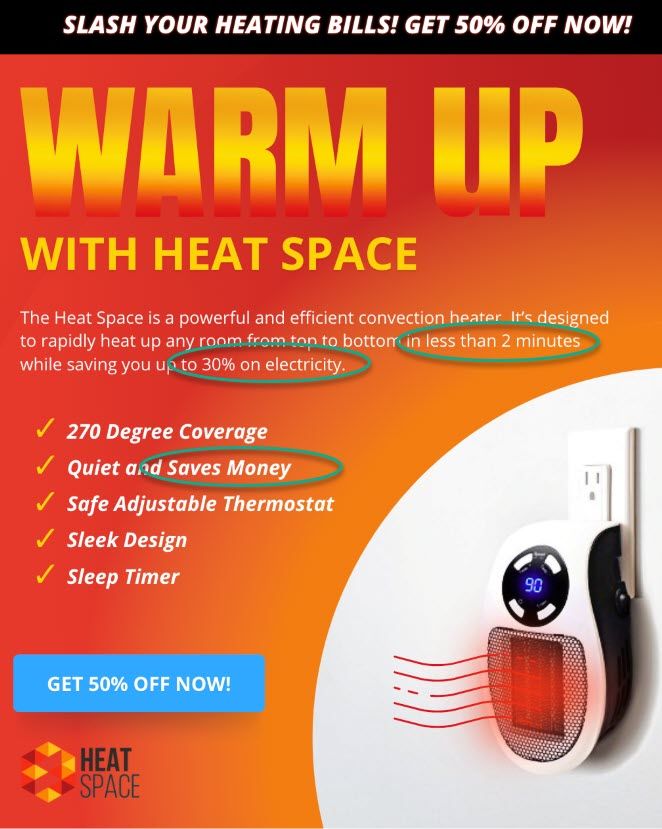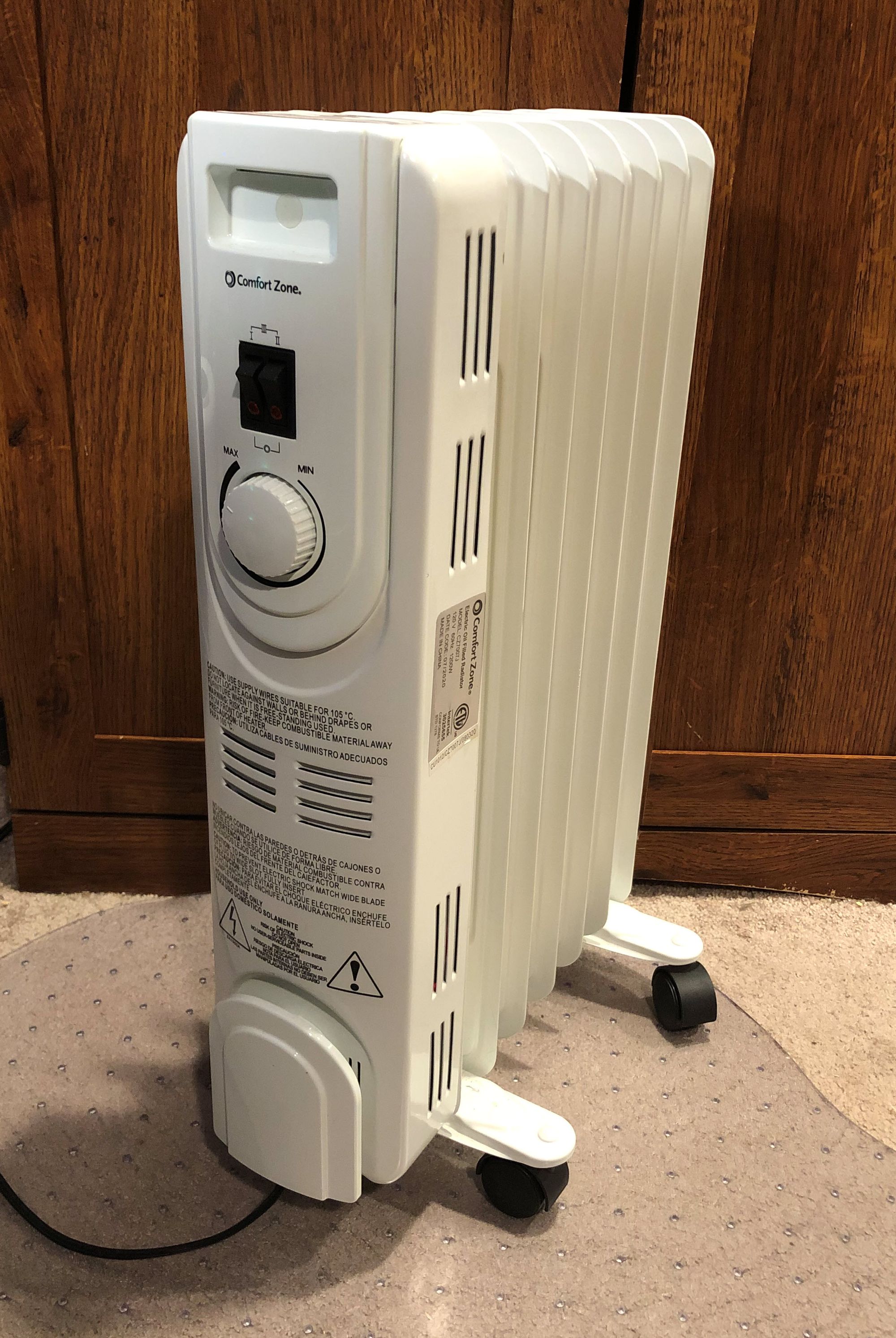Staying Warm for Less this Winter
Beware ads for electric space heaters promising huge savings on your energy bills - it's a bunch of hooey! Read on for some tips on using them properly.

Heating claim spam
While working for an electric cooperative a few years back, I wrote about the grossly misleading and erroneous ads selling overpriced electric space heaters. They touted such things as:
- Reduce your heating bill by 60%.
- Use less electricity than a coffee maker.
- Innovative quartz technology provides more efficient heat.
- And so on.
According to the ads, to enjoy these unbelievable benefits, all you needed to do is buy their space heater, turn your main heating source way back, turn on the new heater when it arrives and let it run 24/7.
Ever hear of "caveat emptor?" How about, "if it sounds too good to be true, it probably isn't"? Both applied to these products and their outlandish claims. Running any electric space heater, 24/7, will cost $120/month/heater when you use a kWh charge of $.122 and a heater rating of 1500 watts, the industry norm. What you'd save on other heating fuels like oil, propane, or natural gas would be eaten up by sky-high electric bills.
They're baaack!
The ads disappeared around 2013, and I felt the world was safe from this particular brand of snake oil. But, alas, I was mistaken. Just this week, my email spam folder has been filled with ads for small electric heaters you plug into a nearby outlet to enjoy inexpensive heat.
Not only are they jamming my spam folder, I saw an article in one of my computer emails about the little heater that is taking the world by storm. They really need to stick to computers and leave energy stuff to others.
Check out the screenshot of the typical ad I'm seeing below.

Breaking down the spam
So, where's the snake oil in this ad? I'll admit it isn't as blatant as the ones 10 years ago. I suspect legal action put the screws on those companies. However, I've highlighted three bits of misinformation, or at least unbelievable. Let's review them now, shall we?

1. Heat up any room in less than 2 minutes. Unless they are talking about a port-a-john size room, this claim doesn't hold water. Something this small actually having the power to accomplish the claim would probably melt the outlet.
2. Saves up to 30% on electricity. Let me call BS on this one too. Without knowing the wattage of these heaters, I cannot calculate the actual cost. However, using an electric heater to save on your electric bill kind of flies in the face of common sense. Sure, I know they are hinting that you turn back your primary heating source and heat the area around you, which in itself is a good idea. But you aren't saving $$ unless you turn something else back or off.
3. Saves money. See #2.
Please note that I am not disparaging the product itself. It probably works just fine, especially when used under or near a desk or chair. What I am pointing out is the misleading savings claims.
Using space heaters correctly
The idea of turning your primary heating source back significantly and supplementing with space heaters can save money when done correctly. Here's how to use space heaters to improve your comfort while saving on the heating bill.
Before diving into this strategy, make sure any room with plumbing in an outside wall has enough heat to prevent the pipes from freezing. What good is saving on heat when you spend it on plumbing repairs?
Electric baseboard heat
If you have baseboard electric heat, turn it to the lowest setting in rooms you rarely use and close the doors. This compartmentalized your home, concentrating heat where you want it.
In the rooms you regularly use, increase the baseboard temps a bit and use a portable electric heater to keep you warm. When you leave the room, turn the heater off or take it with you.
Central heating system - electric heat pumps and fossil fuels
The same basic strategy applies, turn the heat pump thermostat way back, close the dampers and doors to rarely used spaces, and use your portable heater where you are.
Compartmentalizing tidbits
Using doors and dampers to focus where the heat goes in your home is the easiest approach. But, if you have an open-plan type of home layout, hang heavy drapes across openings to heat corral the heat. We use spring-loaded curtain rods in the opening with great success. Shucks, it is just like living in a medieval castle - tapestries and heavy drapes helped keep those warmer.
Protect the central system thermostat
Check out where your main thermostat is located. Does it feel drafty around it? Does sunlight hit it during the day? Both situations can cause the thermostat to react incorrectly. A breeze can make it think the house needs more heat, while a lovely spot of sunlight or a frosty day might make it think the house is warmer than it is.
Shielding the thermostat from both situations will aid in maintaining the temperatures you set. How might you do this? You can invest in a tamper-proof cover to control drafts and dissuade people from adjusting the temperature willy-nilly. Or, consider a tiny version of doorway drapes.
How much might you save?
My research guys from my electric cooperative days said people could realistically expect to save around 6%. It's not a huge amount, but these days every little bit helps.
Shopping for space heaters
All electric space heaters are created equal. The industry norm on space heaters is to provide 2 - 3 power settings equating to 500, 1000 and 1500 watts. Regardless of how the product produces heat, be it space-age quartz, oil-filled or whatever, they all use the same amount of electricity. The $30 special from the local hardware store produces the same amount of heat as the fancy model costing a lot more. Pick the look and features you like and implement your winter heating strategy soon.
Around our house, we like the oil-filled heaters. The manufacturers of this type of electric space heater advertise that they are more efficient since the oil radiates heat after you turn them off. While this is true, they are no more efficient than any other electric heat source while in operation; they simply offer a bit extra heat after you turn it off.

Calculating the cost of operation
If you are interested in calculating the cost of operating an electric space heater, or anything electric, here is the procedure.
1. You need to convert the item’s consumption (Determined by watts, remember the 3 heater power settings?) to kilowatt hours (kWh).
Watts/1000 = kilowatts (kW)
kW x hours of operation = kWh
Hours of operation are typically done per day first. Then you can calculate the cost per week, month, etc.
2. Next, you need to calculate the cost.
kWh x cost per kWh = cost of operation
kWh x $.122 = cost of operation
3. Practical example – a 1500-watt space heater, operating 4 hours per day, and energy costs $.122 per kWh.
1500/1000 = 1.5 kW
1.5 x 4 hours per day = 6 kWh
6.0 x $.122 per kWh = $.732 per day
If you run your heater this way for 30 days, your cost will be $21.96. Imagine the monthly cost if you run the heater 24/7...pretty scary to this author!
4. Holiday example - one string of 100 mini Christmas lights
(.4 watt per bulb x 100)/1000 = .04 kW
.04 x 8 hours per day = .32 kWh
.32 x .122 = $.039 (3.9 cents) per day to operate
If you run your Christmas lights for the entire month of December, your total cost would be 31 x 3.9 = $1.21. Not a bad value for some Christmas cheer!
